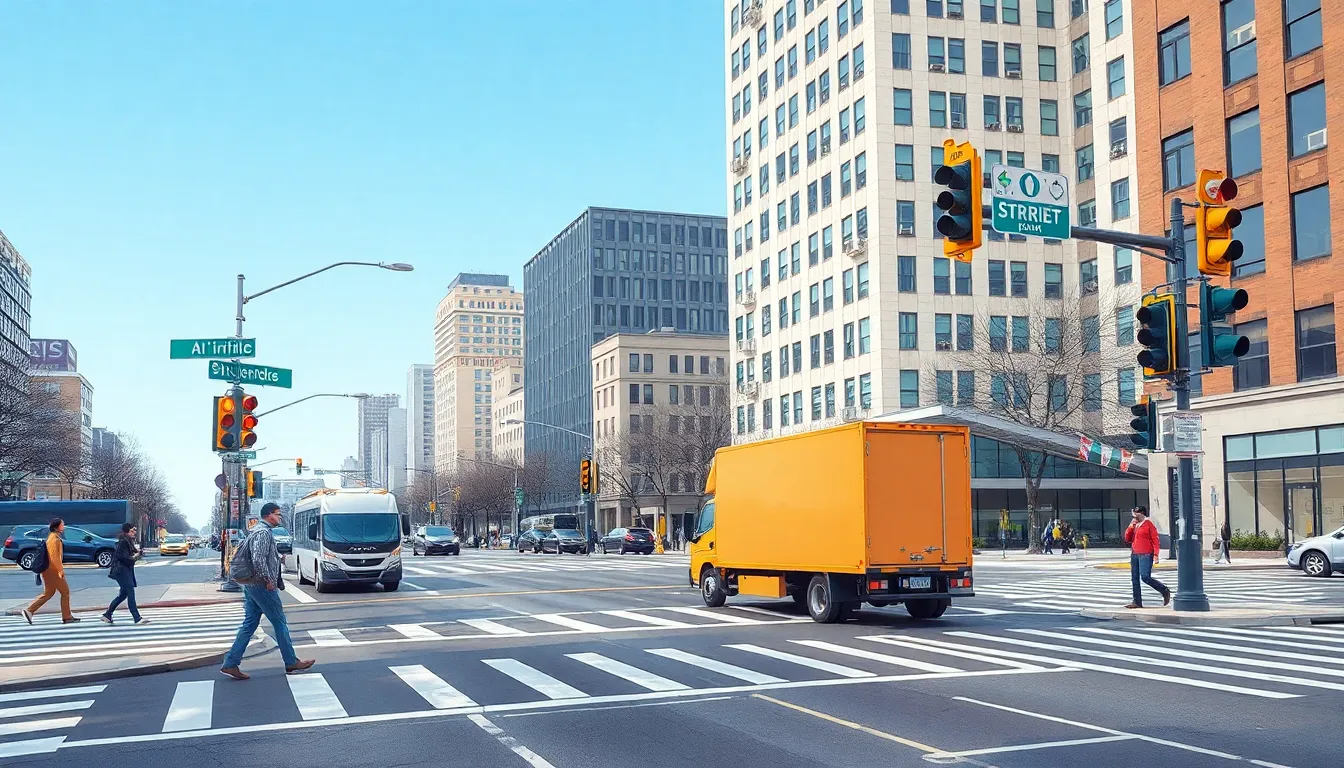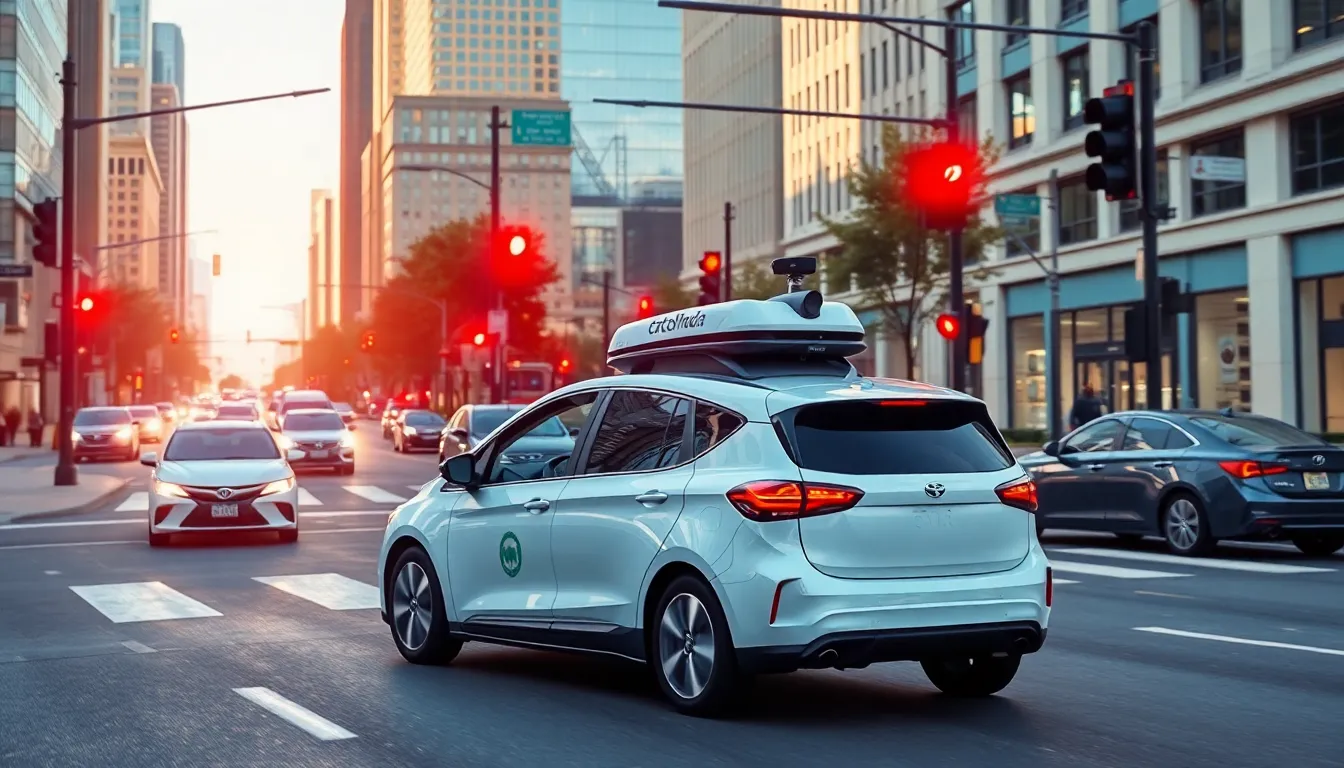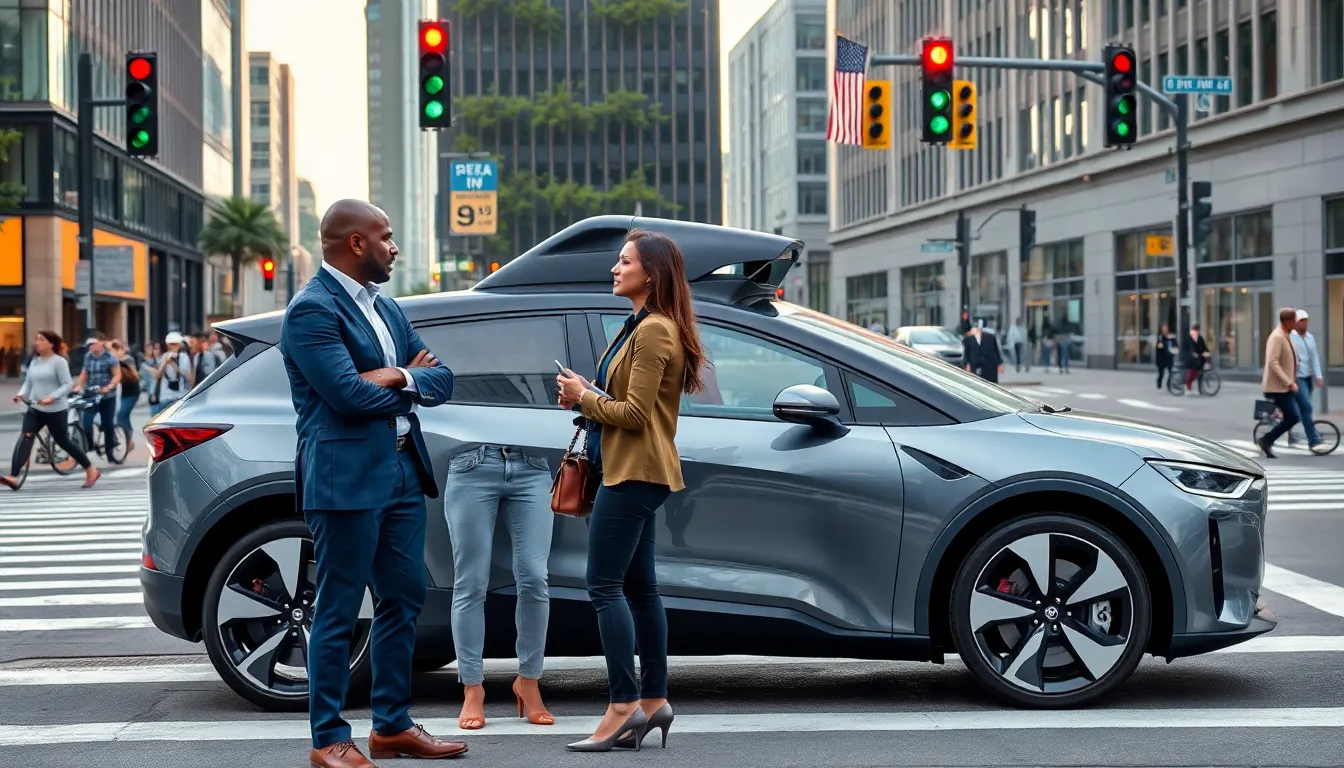Imagine a world where your morning commute doesn’t involve dodging traffic or cursing at the GPS. Enter AI in transportation—it’s like having a personal chauffeur who never gets lost and always knows the fastest route. From self-driving cars to smart traffic signals, artificial intelligence is revolutionizing how we move.
Table of Contents
ToggleOverview of AI in Transportation
Artificial intelligence significantly transforms transportation systems, enhancing efficiency and safety. Machine learning algorithms analyze traffic patterns, allowing for real-time adjustments to traffic signals. Autonomous vehicles use AI for navigation, processing vast amounts of data from sensors and cameras to operate safely in various environments.
Smart logistics relies on AI to optimize routing and inventory management. Companies use predictive analytics to anticipate demand, ensuring timely deliveries and reduced operational costs. Drones, integrated with AI, assist in parcel delivery, reaching destinations faster than traditional vehicles.
Public transportation sees improvements through AI-driven systems. These systems streamline scheduling and increase service reliability by analyzing passenger data. Riders enjoy more accurate arrival times due to continuous monitoring of bus and train locations.
Safety benefits arise from AI applications in traffic management. AI can detect accidents and reroute vehicles to minimize congestion. Furthermore, predictive maintenance uses data analytics to foresee equipment failures, ensuring safer transit experiences.
Connected vehicles enhance collaboration between cars and infrastructure. Vehicle-to-everything communication facilitates safer navigation by sharing crucial data among cars, pedestrians, and traffic controls. This connectivity reduces accidents and promotes intelligent urban planning.
Overall, AI in transportation changes how people and goods move. Innovations drive convenience and efficiency, shaping a future where transportation is safer and more reliable. The integration of technology continuously evolves, paving the way for a smarter transportation landscape.
Benefits of AI in Transportation


The integration of AI in transportation offers various advantages that enhance operational capabilities and safety. These benefits include efficiency improvements and enhanced safety features.
Efficiency and Cost Savings
AI optimizes routing for delivery services, ensuring timely shipments. Machine learning analyzes traffic flows, enabling real-time signal adjustments to minimize delays during peak hours. Companies experience reduced fuel costs and improved asset utilization by using smart logistics solutions. Predictive maintenance also plays a crucial role; it identifies potential vehicle issues before they escalate, reducing downtime and repair expenses. Transportation agencies report significant savings by implementing AI technologies in fleets, leading to a more sustainable operation.
Improved Safety Features
Enhanced safety measures arise from AI applications in traffic management. Systems equipped with AI can promptly detect accidents and reroute approaching vehicles, alleviating congestion. Autonomous vehicles navigate by processing data from sensors and cameras, ensuring adherence to traffic laws and improving decision-making processes. AI-driven systems continuously monitor vehicle health, predicting maintenance needs to prevent breakdowns. Increased communication between connected vehicles and infrastructure further promotes safer navigation, enhancing overall road safety and minimizing accidents.
Challenges of Implementing AI in Transportation
Implementing AI in transportation presents significant challenges that must be addressed. These challenges include technical barriers and regulatory issues that impede progress.
Technical Barriers
Integrating AI into existing transportation systems faces numerous technical barriers. Complexity of data integration poses a significant hurdle, as various systems need to communicate seamlessly. Developing reliable algorithms requires vast amounts of high-quality data, often difficult to obtain. Sensor inaccuracies can also hinder the effectiveness of autonomous vehicles, affecting their decision-making abilities. Furthermore, legacy infrastructure lacks compatibility with new AI-driven technologies, complicating deployment efforts. Ensuring cybersecurity is essential to protect transportation systems from potential threats. Each of these factors contributes to a challenging landscape for AI adoption in transportation.
Regulatory Issues
Navigating regulatory issues can slow the advancement of AI in transportation. Government regulations often lag behind technological innovations, creating uncertainty for developers and users. Regulatory frameworks may not adequately address the complexities of autonomous vehicles and AI systems, leading to potential legal challenges. Different regions introduce varying standards, complicating the implementation process across jurisdictions. Stakeholder concerns about liability in case of accidents demand clear guidelines. A comprehensive understanding of these regulatory landscapes is crucial for successful AI integration in transportation.
Case Studies of AI in Transportation
AI has made notable advances in transportation, transforming traditional methods into smarter and more efficient systems. Various case studies illustrate the real-world impact of AI technologies.
Autonomous Vehicles
Autonomous vehicles revolutionize personal and commercial transportation. Companies like Waymo and Tesla utilize AI algorithms to enhance driving capabilities. Collected data from sensors, cameras, and GPS systems enables these vehicles to navigate complex environments. In 2022, Waymo’s self-driving taxis operated in Phoenix, Arizona, averaging over 10,000 rides daily. Safety records from these routes demonstrate substantial reductions in accident rates compared to human-driven vehicles. Improvements in decision-making processes empower self-driving cars to respond to traffic laws and obstacles effectively.
Smart Traffic Management Systems
Smart traffic management systems optimize urban mobility through AI technologies. Cities like Los Angeles and Barcelona implement AI-driven traffic signals that adapt in real-time based on traffic conditions. Algorithms process data from cameras and sensors, making instantaneous adjustments to minimize congestion. Studies indicate that Los Angeles saw a 20% reduction in travel time after deploying AI traffic management solutions. Enhanced coordination of traffic flow reduces emissions and promotes efficient commuting. Moreover, predictive analytics in these systems anticipate traffic patterns, facilitating better event planning and emergency response coordination.
Future Trends in AI in Transportation
Emerging trends in AI are set to reshape transportation significantly. Emphasis on autonomous vehicles grows, with advancements in self-driving technology leading not only to safer commutes but also improving regulatory frameworks to accommodate these innovations. Enhanced data analytics plays a crucial role in optimizing traffic management, as cities increasingly use AI to assess and respond to real-time traffic conditions.
Increased collaboration among transportation stakeholders fosters seamless integration of AI solutions. Multimodal transportation systems rely on AI to coordinate various transport methods, ensuring efficient transfers and reduced waiting times for passengers. Adoption of AI-powered fleet management systems means enhanced vehicle utilization and timely deliveries across logistics networks, reducing operational costs.
Innovations in electric vehicles benefit from AI as well. Smart charging systems develop, allowing electric vehicles to optimize energy use based on demand and grid conditions. Real-time data processing enhances efficiency, enabling municipalities to implement energy-saving strategies in public transport fleets.
Moreover, machine learning continues to refine predictive maintenance practices. This advancement allows fleet operators to address potential issues before they escalate, minimizing vehicle downtime and repair costs. Incorporation of AI in urban planning is also crucial, as it helps city planners design infrastructure that accommodates growth while supporting sustainable transportation solutions.
As AI technologies evolve, ethical considerations emerge. Privacy concerns over data collection capture attention, prompting calls for transparent data usage policies. Regulatory responses will need to evolve alongside technology to ensure public safety and trust in AI-driven transportation systems. Addressing these trends will define the future landscape of AI in transportation, driving efficiency and innovation forward.





